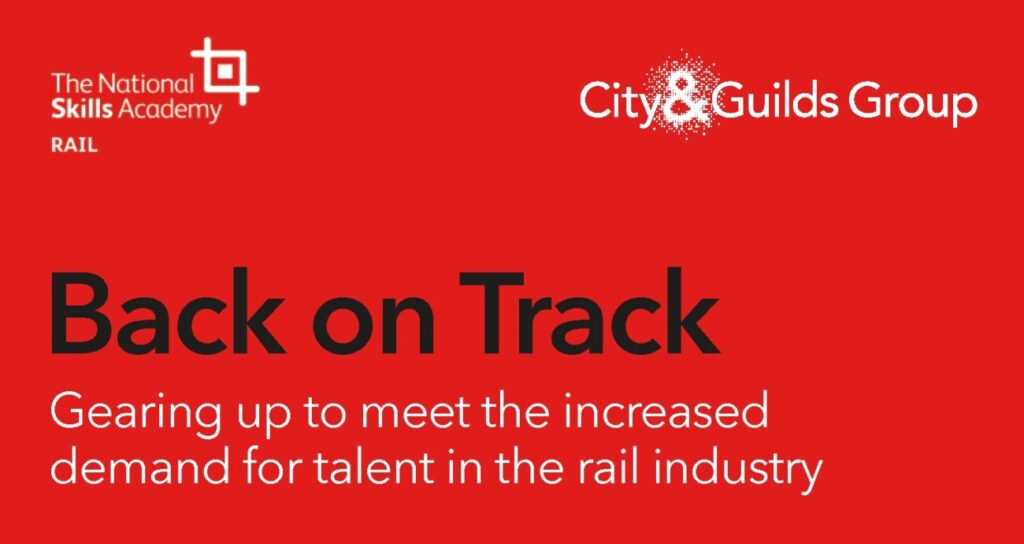New research by City & Guilds and NSAR paints a stark picture for the future of the rail workforce, with skills shortages set to escalate significantly in the sector over the next five years in the Back on Track report.
To download the report, click here.
With major rail infrastructure projects due to be announced next week as part of the long-anticipated National Infrastructure Strategy, the report – which includes findings from research undertaken by YouGov and data from NSAR on 242,000 workers in the rail industry – reveals that there is potential for these to create a new lease of life for the UK economy through new jobs and economic growth.
Keys findings include:
- Skills shortfall: up to 120,000 additional people will be required over the next 5 – 10 years, with demand for skills peaking around 2025
- An ageing workforce: over 28% of workers in the current rail workforce are over the age of 50
- Failure to attract a diverse workforce: Only 16% of the rail workforce is female and nearly one in four women (24%) would consider a career in rail
Martin Hottass, Managing Director – Technical Training at City & Guilds Group, commented: “The UK rail industry is on the cusp of leading a once-in-a-generation infrastructure revolution, with the potential to create thousands of high quality jobs across the country at a time when they are needed most. However, the dual blow of Brexit and a retirement cliff edge, in addition to systemic issues around growing and retaining skills, means unless Government, employers and industries work together to urgently addresses these issues, they risk scuppering this golden opportunity. It’s clear that greater collaboration will be key to increasing awareness of opportunities in the sector, and ensuring that rail projects are committed to creating lifelong learning opportunities.“
Neil Robertson, CEO at the National Skills Academy for Rail, commented: “The rail industry’s lack of diversity and perception by younger people, are well known, but less well understood – and while many people in the industry are already working to recruit and upskill a more diverse workforce, it’s by shedding a light on these issues that we can understand the solutions that will truly make an impact. Now, as we look to invest in new talent in to fill future skills gaps in the rail industry, it’s also clear that we can use this opportunity improve social mobility across the UK. By hiring people from different backgrounds and regions and providing them with quality skills and career progression, we can ensure that these infrastructure projects not only create jobs, but also promote positive socioeconomic change.

